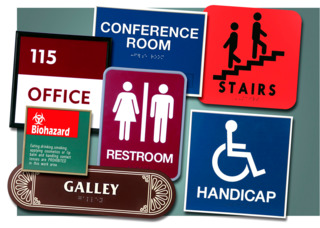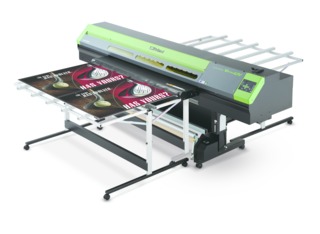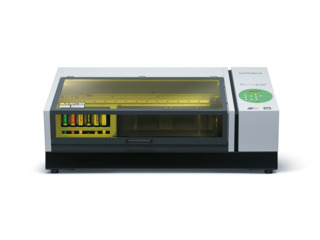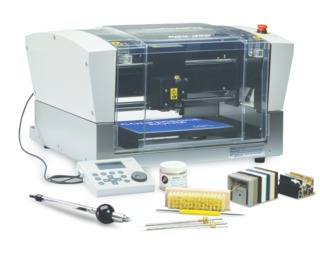Application Spotlight: Braille Printing in a Digital Age
A lack of texts and signage printed in braille is among one of the many roadblocks to information that the visually impaired face.

We live in an age where information is seemingly limitless and it’s assumed that everyone has equal access to it. Unfortunately, for those who are blind or visually impaired this isn’t the case.
A lack of texts and signage printed in braille is among one of the many roadblocks to information that the visually impaired face. While automated text-reading devices and programs have been a big help to many in the visually impaired community, braille is irreplaceable. Braille enables visually impaired individuals to read, write, and comfortably navigate throughout their communities. A lack of accessibility to braille means a lack of information.
Access Precedes Change
The reconfiguration of different printing applications has made braille texts and signage much more accessible to the visually impaired. Roland DGA, for example, has diligently worked on new workflows and applications for braille printing and signage is.
Kitt Jones, Head of Applications at Roland DGA spoke to Wide-Format & Signage about its VersaUV printing and EGX engraving machines, braille applications, and the key differences between Roland’s two methods of creating braille signage.
As the Head of Applications, Jones creates new uses and workflows for existing applications.
“If somebody wanted to print on a candle, I would help them develop a workflow, figure out if it can be done, and then document that for future use,” Jones explained. “I also do demos, when we get new machines, I figure out how they work, and what can be done with them. Where the breaking points are and where the sweet spots are. We document that information and give it to users and dealers.”
The American Printing House for the Blind (APHB) approached Roland to assist with creating new and easier braille printing applications. Jones helped APHB make use of Roland’s products for their specific needs.
Roland continues to provide the tools necessary to print braille with both UV printers and their engraving machines.
UV Gloss Applications
UV gloss printing is a multi-layering ink process that creates raised text and images.
“The way we make our braille is by layering our UV gloss ink to a certain height that makes it [ADA] compliant,” said Jones. (Jones also noted that it’s up to customers, and the owners of these machines to make sure their signs are ADA complicit.)
Roland offers a range of UV gloss printers that can meet a variety of braille printing needs, that include the VersaUV LEJ and LEF printer series.
Engraving Applications
An engraving application involves two layers of sign material being chipped away at, according to Jones. The first layer is chipped away leaving a graphic or pictogram in place, and then little holes are drilled for braille beads placed by the EGX engraving machines.
“It’s very tedious. With UV you can print graphics on signage, you can print a background on it, and you can also have braille, to make the signage a little bit more diverse.”
Engraving machines can engrave wood, plastics, metals, and ADA signage—unfortunately engraving machines have no graphic abilities.
While it’s evident that there are big advantages to choosing UV printers over engraving machines, according to Jones, there’s a large profit margin for ADA signage no matter the technique.
The Future of Braille Applications
As time goes on it’s likely that new workflow, machines and printing applications will be invented to better suit the needs of the visually impaired. 3D printing, for example has been hailed for its ability to quickly generate braille printed products, such as books and puzzles. (Some exemplary examples of this include the Fittle, and The Tactile Picture Books Project.)
There’s still much more work to be done in order to give visually impaired communities the same access to signage and text that non-visually impaired people have. But hopefully in time new applications will help bridge the information gap.







